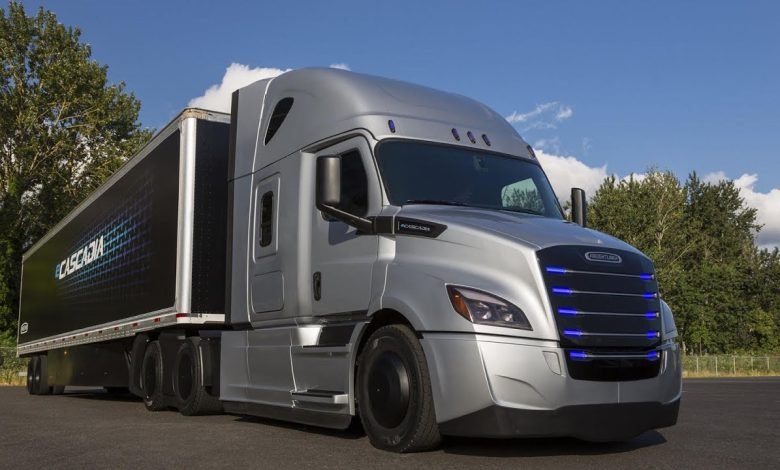U.S. Electric Truck Market Demand and Future Prediction Report 2022-2030
U.S. Electric Truck Market Demand

U.S. Electric Truck Market Overview
Most electric trucks are commercial vehicles that are powered by a rechargeable battery and used for cargo delivery. They also have fewer moving parts than diesel trucks and do not require multi-speed gearboxes. Which enhances dependability and lowers vehicle maintenance costs. While releasing nearly no noise. Furthermore, with the government’s attempts to promote their adoption, the U.S. electric truck market is set to reach $15,084.3 million by 2030 from $308.9 million in 2021, at a rate of 54.0% from 2021 to 2030.
Various state and county governments are supporting the usage of electric trucks for commercial purposes, to minimize greenhouse gas emissions. However, the absence of charging stations is a barrier in their adoption. Therefore, the government is working on deploying EVSE all over the country. According to Statista, the U.S has over 113,600 charging stations for EVs as of January 2022. California has the largest number of these chargers, with about 41,300 installed in private and public places.
Why Government Is Promoting Electric Trucks?
There are several reasons that are making the government promote electric trucks:
Lower running and maintenance costs
Electric trucks contain fewer moving parts than those with combustion engines, which means lower maintenance costs. Majorly because of the presence of a simpler powertrain. These trucks have fewer parts to service than traditional fuel trucks; therefore. They are usually less expensive to operate in the long run.
Diesel use is destroying the planet
Fossil fuels are scarce, and their consumption is damaging the world. Toxic pollutants from diesel trucks have long-term negative health impacts. Electric trucks emit far fewer pollutants than gasoline or diesel vehicles, while fully electric ones emit none. The transportation sector in the U.S. is a major polluter, emitting 27.3% of the GHGs in the country, as per the EPA.
No noise pollution
Since there is no fuel or gas engine under the hood, electric trucks may operate silently. As electric trucks are very quiet, manufacturers have to incorporate fake noises to keep walkers safe. Only 65.5% of Europeans are regularly exposed to traffic sounds exceeding 50 decibels, according to StreetBlog USA, while 97% of Americans deal with persistent noise from the car-and truck-dominated road network.
Types of Electric Truck
BEVs
Internal combustion engines are replaced with electric motors, batteries, and motor & battery controllers in BEVs. Thus, since they get all of their power from battery packs, they are purely operated on electricity. This, combined with the lowering battery cost, improving battery technologies, and the government initiatives for the development and purchase of these vehicles, have made them the most popular of electric trucks.
HEVs
The additional electricity delivered by the electric motor in an HEV may allow a smaller combustion engine to be used. When the vehicle is halted. The battery can also supply auxiliary loads and decrease engine idling time. These elements work together to improve efficiency, without losing performance.
PHEVs
PHEVs have both a combustion engine and an electric motor that runs on battery power. In comparison to HEVs, PHEVs have bigger battery packs. This allows the vehicle to travel modest distances using only electricity (approximately 15 to 60 miles in current versions), which is known as the vehicle’s “electric range.”
There are several ways to integrate the energy from the engine and the motor, in addition to battery storage and motor power. Parallel and series are the two most-common configurations. A mechanical coupling connects the electric motor and the engine to the wheels in parallel hybrid operation. The wheels may be driven by both the engine and the electric motor. On the other hand, only the electric motor drives the wheels in series hybrids, and the motor’s electricity is generated by an internal combustion engine or the battery.
FCEVs
FCEVs are powered by pure hydrogen gas stored in the vehicle’s tank. They can fill in <4 minutes and have a driving range of over 300 miles, similar to traditional internal combustion engine cars. Other sophisticated technologies, including regenerative braking, that absorb and store the energy lost while braking are included in FCEVs to improve efficiency.
Electric Truck Demand in Different States of U.S.
California witnesses the highest electric truck sales in the U.S. The government’s massive support. In the form of policies and incentives, stimulates such adoption in the state. For instance, in June 2020, the state government adopted the target to have 1.2 million electric trucks to be registered in California by 2035.
Similarly, the first public curbside charging station in New York City with 100 public ports and then, another 20 for the city fleet, was installed in 2021 by the state department of transportation, in collaboration with the city’s electric utility firm, Consolidated Edison. Moreover, the New York Power Authority opened the agency’s first two public fast-charging stations in municipal carparks on the Lower East Side and Long Island City.
In June 2020, New York City had restarted its Clean Trucks Program. Which gives funding to promote the change from diesel to electric vehicles. With 2,100 EVs in 2020, the objective is to achieve 4,000 EVs by 2025.
Hence, electric trucks are high in demand in the country because of being environment-friendly and offering the advantage of low maintenance costs to individuals and fleet owners.



